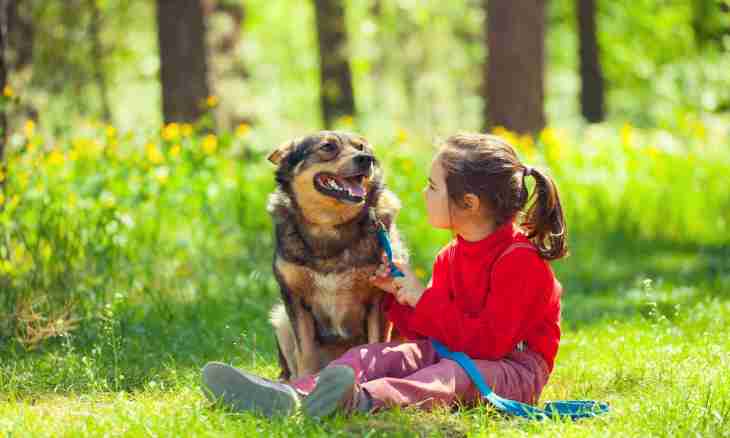Favorable impact on the person is made by communication not only with other people, but also with brothers smaller. And appearance of the pet in the child's life, will help it to learn to care for it, to develop kindness and mercy. Such child will become independent quicker and will understand what is responsibility.
Becoming is more senior, children begin to get acquainted actively with the environment, including to show interest in animals and plants. Thanks to new impressions, the child expands limits of consciousness, to learn to interact with objects and subjects around himself.
Perception of animals by children of different age
Children, depending on age and perception, behave with animals differently. In kids the pets attract curiosity and interest, they look for tactile contact, want to feel, touch, fray, consider in all its aspects. For children the animal is more senior - it is the friend and the companion to whom they talk, tell secrets or the invented stories.
- Up to 4 years: at this age it is worth getting an animal, small and easy on leaving: bird, rodent, decorative rabbit, small fishes. Kids will reach for pets, they will want to touch them, to stroke, play. Parents have to explain that an animal not a toy, it is necessary to treat it accurately and tenderly.
- Up to 6 years: at this age children become already more responsible, and they can charge care of an animal. They already know what species of pets exist, elementary rules of care for them: walking, feeding, hygiene. Parents can give to the child some simple duties, but at first it is better for them to watch that the child did everything correctly.
- Up to 8 years: these are already independent children who know what is responsibility and can care for the pet. At this age the emergence in family of several animal different types is possible, but cats and dogs use the greatest sympathy.
Value of animals in the child's life
Pets influence various processes, namely:
Development
Studying and playing with an animal, the child gains merits. At this time parents have to teach the child to treat correctly an animal, to explain that it is impossible to show aggression and cruelty to animals.
Socialization
The pet becomes the first friend and the defender for the child. It gives to confidence and helps to accustom quicker to collective, to get acquainted and to communicate with peers, to make friends.
Intellectual development
Thanks to tactile contact and through games the child has a development of sensory perception and perception of surrounding objects. Establishment of relationships of cause and effect allows to develop logical thinking.
Ethical component
The events related to pets (emergence, disease, death), allow the child to endure different emotional states, both positive, and negative. Perception from the esthetic point of view develops art sight and understanding of natural beauty and grace.
Physical and emotional development
Animals allow the child to test all possible scale of feelings and emotions, and joint games and walks form steady physical reactions, for example, coordination of movements, speed of reaction.
Medicinal properties
Different types of animals are applied to treatment of physiological and psychological illnesses of children. They are capable to help to cope with a depression, to improve the general state at autism, a cerebral palsy, at diseases of the musculoskeletal device, etc.
But it is not all list. Pets excellent assistants and in labor, ecological and moral education, manifestation of humanity, decrease in level of conflictness and malevolence to the world around, development of a sensorika, creative thinking and imagination. Classes and games help to acquaint children with work and discipline.
Animals – an important link in education of the child. They not only help with development of positive feelings – love, care, caress, tenderness, but also contribute to the development and knowledge of the world around, including through a game. An important factor is also the attitude of parents towards animals, the child will copy in the future their behavior model.

